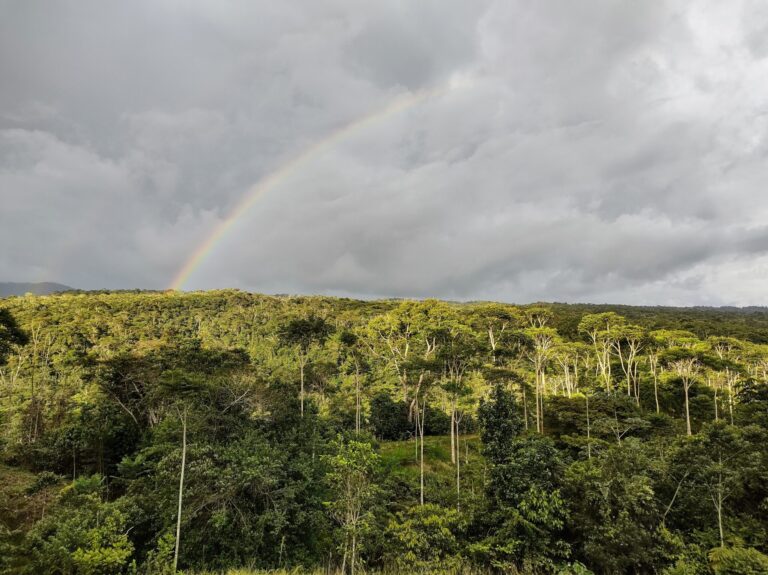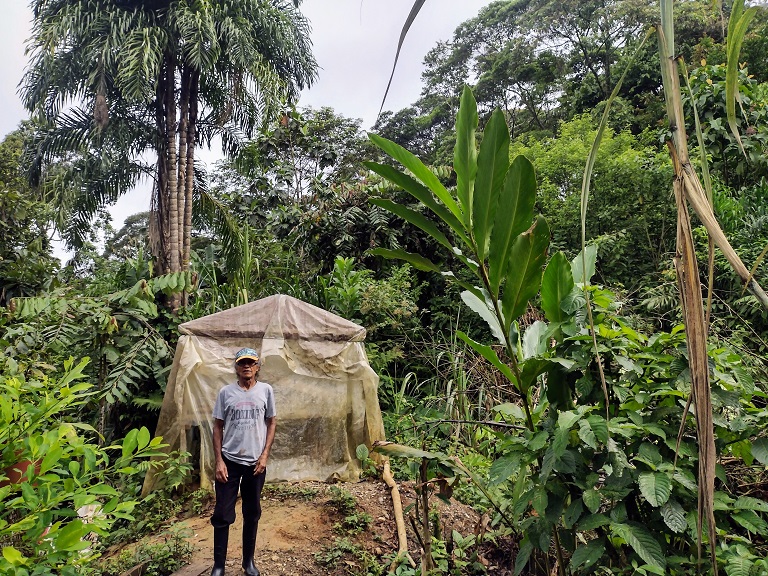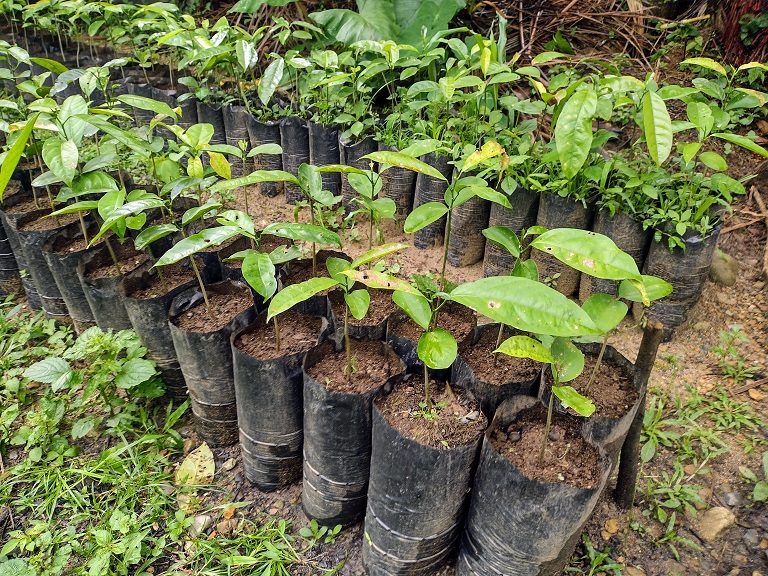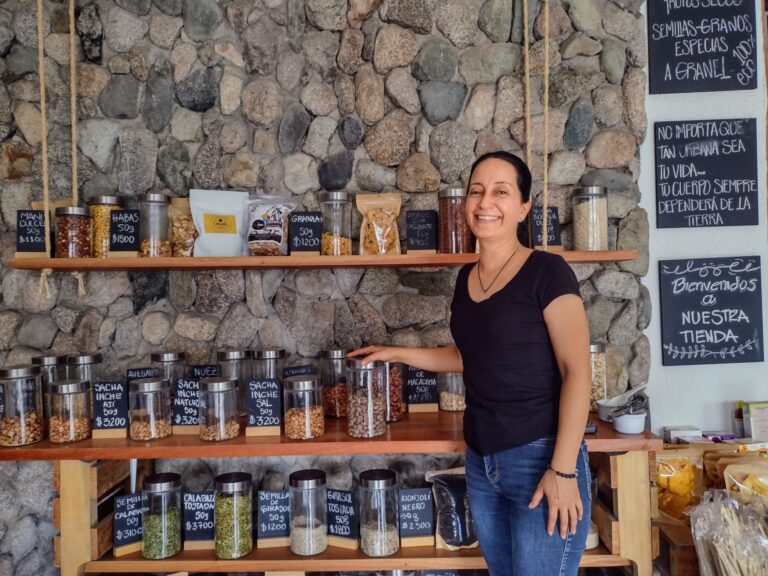- Colombian chef Mauricio Velasco Castro, founder of Amazonico restaurant in Mocoa, Putumayo, has turned to the Amazon Rainforest for inspiration and identity; he hopes to help build a bioeconomy through food and sustainable ingredients and native medicinal and edible products.
- Amazonico gets its supplies from 22 small-scale producers from Putumayo, including from Indigenous communities and campesinos.
- The bioeconomy is an economic system based on renewable biological natural resources, and it is an integral part of Colombia’s new national plan created by President Gustavo Petro and approved by Congress in May; Petro has said the bioeconomy in Amazonia will be key to saving the rainforest and raising the region’s living standards.
When Mauricio Velasco Castro graduated from culinary school in Bogotá, he didn’t look for a job in one of Colombia’s fine dining restaurants or for an internship abroad. Instead, he chose the jungle.
“While many of my classmates headed to France or Canada or somewhere else where there is more money and opportunity, I returned to the Putumayo to live with Indigenous communities and learn about their use of local ingredients,“ Castro said in May when I visited him at Amazonico, his restaurant overlooking the Mulato River in Mocoa, the capital of the Putumayo department, where Castro, 26 years old, was born and raised.
“I ended up visiting and living with nine different communities, and what I learned beyond the actual cooking techniques was how to look at food from an entirely different perspective than I learned in culinary school,” said Castro.

Nestled in the emerald foothills of the piedemonte amazonico, Mocoa is crossed by rivers rushing down from the lush peaks above it. According to the Wildlife Conservation Society, the Andes-Amazon Piedmont of Colombia is one of the most biodiverse in the world, hosting species and features from the world’s largest rainforest and from the Andes. The Serrania de los Churumbelos National Park, for example, located just outside of Mocoa, is home to large mammals like the Andean spectacled bear (Tremarctos ornatus) and the jaguar (Panthera onca), 114 different species of butterflies and 462 different species of birds, about 25% of the country’s total bird species.
The piedemonte amazonico is also a deforestation hotspot, as decades of exploitation from cattle ranching, coca cultivation, oil exploration and timber harvesting have decimated the Amazon Rainforest across Putumayo and the neighboring department of Caquetá.
“This is really an educational endeavor, to rescue and bring back a culture, through the culinary process, that can open up the path to a sustainable economy for the Putumayo region,” said Castro, who also said he believes that creating an identity based on the edible and medicinal products of the Amazon Rainforest could recover the traditional relationship between people in the region and natural ecosystems that Indigenous populations still employ.
“Because the Indigenous communities are experts in managing their territories, to implement this kind of food culture into the modern world is really an ecological project,” Castro told Mongabay. “These ingredients are cultivated and gathered within ecosystems in ways that have been done for thousands of years and do not damage them; in fact, they do they opposite — they protect them.”

Castro opened Amazonico in 2021, with a mission to work only with sustainable producers from Putumayo, and he quickly found success. According to him, “to eat from your territory is to feel the breeze of the mountains in your food,” as he sees food as an almost spiritual connection between land and the people who live on it.
Amazonico gets its supplies from 22 small-scale producers from Putumayo, including from Indigenous communities and campesinos. Castro said finding the right suppliers was complicated, as he needed to ensure that all products were cultivated sustainably through agroforestry systems that not just produce species native to the Amazon, but restore the entire ecosystem as well.
“It’s a different vision; this is not farming,” Castro said. “It’s more like forestry, working with the rainforest itself.”
Keeping it small
The bright yellow tails of mochillero birds (Psarocolius decumanus) flash through the thick canopy surrounding the home of Nelson Enriquez and Doña Elba Montenegro, in a vereda, a rural neighborhood just on Mocoa’s outskirts. Despite owning just over an acre of former cattle pasture, the two grow more than 160 Amazon native species, most of them edible or medicinal.
“Here we have created a model that shows that people can have a good living, grow their own economy, their own healthy diet and also reforest the Amazon,” Enriquez said as he weaved through his garden.
Besides providing Amazonico with herbs like stinging nettles for their cocktails and inchi (Caryodendron orinocense), large protein-rich nuts, the couple also make their own yogurts, wines, flours and other products they sell to the public.

The key to sustainable Amazonian agroforestry production, according to Enriquez, who said he learned it simply by spending time in the forest and observing nature at work, is in the ecosystem’s biodiversity itself. Planting many different species together, but only few inviduals from each, creates a system that not only produces lots of different products but supports animal life and human health.
“Here, for example, we produce a yogurt made from copoazú [Theobroma grandiflorum]. If the copoazú is hit with disease and we don’t get a harvest, we have plenty of other products.” Enriquez said. “This biodiversity also serves our diet. These different species have different nutrients, so we are taking care of our own needs first.”
“This creates sustainability in the ecosystem as well, because so many animals will be sustained by this system, unlike a monocrop,” he told Mongabay.
Alexander Velasquez, director of the Center for Investigations in Andean-Amazonian Biodiversity at the University of the Amazon in Florencia, Caquetá, agreed. His recent research shows that the richness and diversity of Amazonian bird species is higher in small-scale “mosaic” agroforestry systems than in other agricultural models.
“An economy based on sustaining societies and ecosystems from the products of the Amazon forest is nothing new; its exactly what Indigenous societies have always done,” Velasquez told Mongabay in a video interview. According to Velasquez, Putumayo and Caquetá have been intensely exploited and deforested over the last 100 years, suffering the effects of the rubber boom, fur trade and oil exploration. “By the 1990s, we see a total disconnection between the population and the territory, with massive deforestation all throughout the Andes-Amazon region.”

The millennial-old land management systems of the region’s Indigenous population, who were often displaced and sometimes outright massacred by the settlers, was pushed out, said Velasquez; this makes the current movement toward an Amazonian “bioeconomy” a way to reclaim the region’s “ancestral gastronomy.”
The bioeconomy, an economic system based on renewable biological natural resources, is an integral part of Colombia’s new national plan created by President Gustavo Petro and approved by Congress in May. While the plan supports the country’s move from an extractive to a productive model of development, Petro has singled out that the bioeconomy in Amazonia will be key to saving the rainforest and raising the region’s living standards.
“If we create a real bioeconomy that is sustainably managed, it will be a powerful way for the residents of the Putumayo to live well,” Velasquez said. But, because of business interests to grow these native species via monocropping, he warned about the risks to ecosystems and local sovereignty if production becomes intensive and industrialized.
A web of life
Enriquez and Montenegro have been hosting informal workshops on cultivating Amazonian species under a biodiverse agroforestry system for years, but in 2022, they opened an official school. The Escuela de Conocimiento Andino-Amazonico (ECA) meets on the veranda of their home on the first Saturday of every month and each session focuses on sharing knowledge about a particular edible or medicinal species.
“We realized not only did we have to show the people how to grow these foods, but we had to show them how to use them,” Montenegro told Mongabay, explaining that workshops include not just cultivation techniques but also recipes for cooking or making wines, preserves and vinegars.

“In many cases, that meant creating ways to use them,” Montenegro said, showing a flour made from ground chontaduro or peach palm (Bactris gasipaes), a fruit that she uses for baking hearty cookies.
The school, which now counts 27 members from across Putumayo, has become an incubator for training other small-scale producers. The garden of Enriquez and Montenegro has become a kind of nursery, where other producers can pick up starters, seeds and baby plants and trees to add to their own agroforestry systems.

Enrique and Montenegro, as well as most students at the ECA, are also part of the Mocoa hub within the National Web of Family Farmers (RENAF), which includes hundreds of members and organizes monthly farmers markets where producers can sell their products directly to the public.
“The ethno-campesino market was the actual economy of the region in the old days,” says Saira Guerrero Carvajal, a RENAF organizer and the owner of Semilla Y Selva, a brightly lit shop tucked into a side street of downtown Mocoa selling products from RENAF members and other local producers.
“This store was born out of necessity,” she said. “I saw that there was a need for a central outlet for the local producers of Putumayo.”
Semilla y Selva includes products from more than 30 different small-scale Amazonian producers, including bulk native nuts like inchi, maraco (Theobroma bicolor) and sacha inchi (Plukentetia volubilis) and packaged products like camu camu (Myrciaria dubia) and araza (Eugenia stipitata) marmalades and even an açai (Euterpe oleracea) wine that is served at Amazonico. Carvajal also stocks the pure cacao and oyster mushrooms she cultivates in her small but biodiverse agroforestry garden.
“What we are trying to do with this movement of local producers is create an economy of solidarity. One that is healthy for the people and also sustains the ecosystem we live in,” she told Mongabay.

For Carvajal, the emerging Putumayo bioeconomy is a departure from the exploitative and extractive practices of the past and a viable alternative to more destructive development plans that are on the horizon for the area. This includes an already approved massive copper mining project in the rainforest-covered Andean foothills just above Mocoa that would feed the world’s green energy market but potentially devastate local Amazonian ecosystems and contaminate the area’s rivers.
While President Petro has spoken in favor of mining projects for green energy, he has also said that water sources are more important than mining, and in January, he blocked an existing plan to mine copper near the town of Jerichó in the department of Antioquia.
Carvajal is active in the protest movement against the mining project and said there is no time left for more destructive bonanzas in the Putumayo. Instead, she said she thinks people should return to the ancestral economy based on the Amazon’s edible and medicinal products and that a regional agroforestry-based bioeconomy for the Putumayo based on reforestation and cultivating healthy local species is a chance to “reconnect with the Earth.”
Citation:
Velásquez Valencia, A., & Bonilla Gómez, M. A. (2019). Influence of the configuration and heterogeneity of the agroforestry and silvopastoral mosaics on the bird community, Andean Amazon of Colombia. Revista de Biología Tropical, 67(1). doi:10.15517/rbt.v67i1.33250
Banner image: A graffiti wall in Mocoa depicts local ancestral resistance to industrial exploitation. Image by Ocean Malandra.
Related reading:
Logging permit threatens Quilombola bioeconomic ‘paradise’ in the Amazon
FEEDBACK: Use this form to send a message to the author of this post. If you want to post a public comment, you can do that at the bottom of the page.
